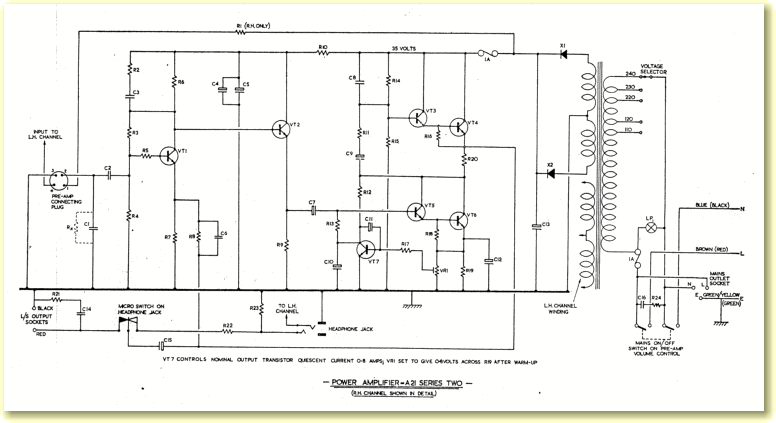| Max o/p Power into 8 Ohms at clipping
|
12 Watts per channel
|
| THD at 10 Watts
|
0·25%
|
| THD at 0·5 Watt
|
less than 0·01%
|
| Frequency and Power Response +/- 1dB
|
30Hz - 20kHz
|
| Output to Tape Recorder
|
150 mV
|
| Input sensitivity: Radio / Tape / Aux inputs
|
150mV 200 kOhms
|
| Disc 1: Magnetic Cartridge input (RIAA)
|
2·5mV into 68 kOhms
|
| Disc 2: Ceramic Cartridge (Flat)
|
50mV
|
| Overload capability
|
25 dB on Disc
|
| Noise (30 phon weighting) 200mV inputs
|
-80dB
|
| Noise (30 phon weighting) Disc 1
|
-70dB
|
| Noise (30 phon weighting) Disc 2
|
-65dB
|
| Rumble Filter (built into RIAA)
|
18dB per Oct below 30Hz
|
| Bass Control
|
+/- 14dB at 40Hz
|
| Treble Control
|
+/- 14dB at 10kHz
|
| HF Filter
|
12dB per Oct above 7kHz
|
| Power Consumption
|
70 Watts
|
| Size
|
400 x 130 x 230 mm
|
| Weight
|
11 Kg
|





